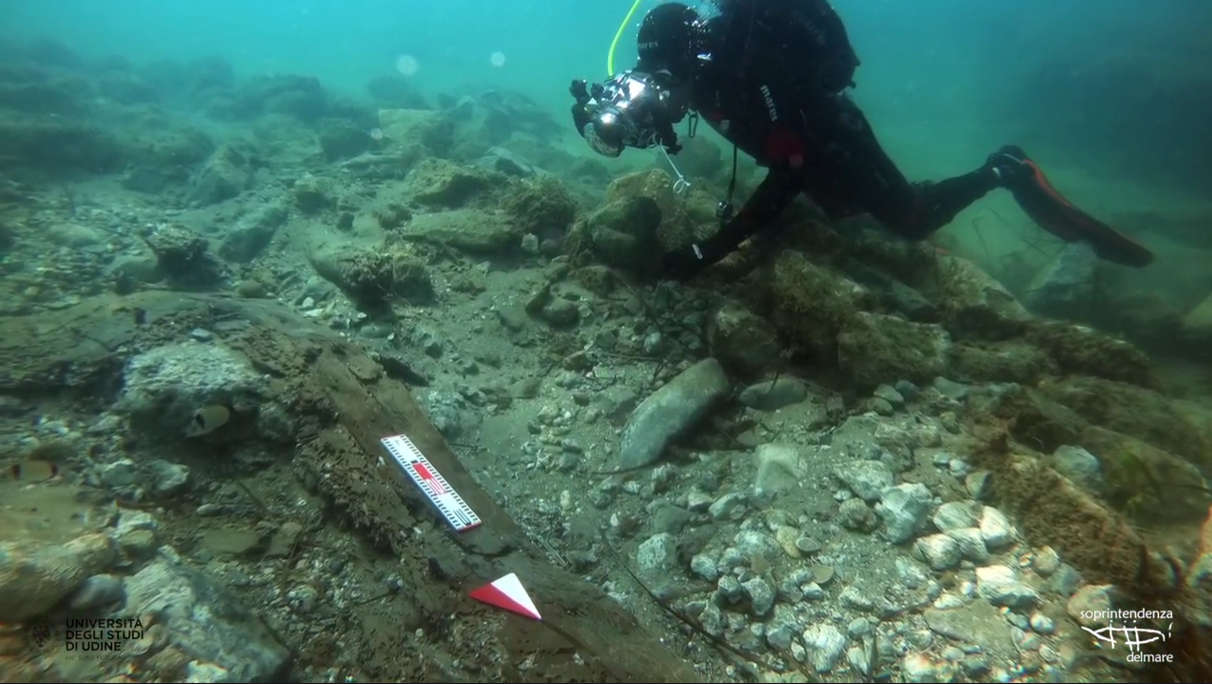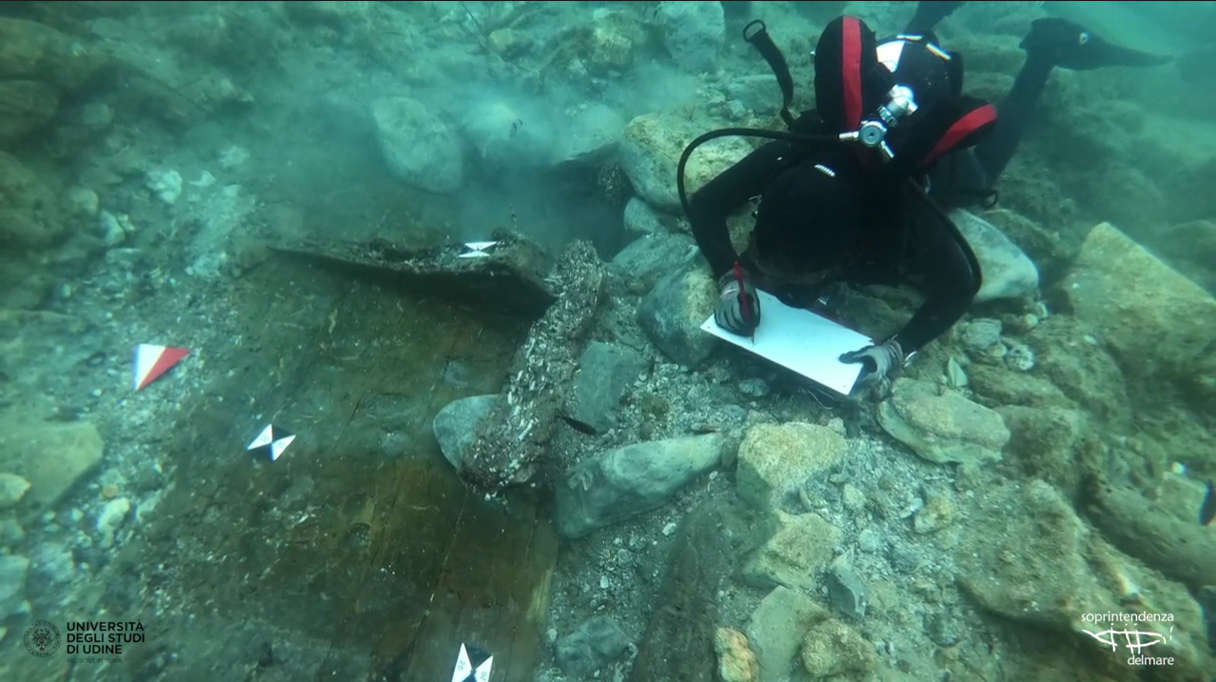An ancient wreck dating back to the 6th-5th centuries B.C. has been discovered in the waters off Santa Maria del Focallo, in the territory of Ispica, province of Ragusa. The discovery, the result of an underwater excavation campaign organized by the Sicilian Region’s Superintendence of the Sea in collaboration with the Department of Humanities and Cultural Heritage Studies at the University of Udine, concerns remains of a vessel that lay buried under a layer of sand and boulders at a depth of six meters.
The wreck, which testifies to shipbuilding techniques of the time, was made using the “on-shell” method. This technique involved the use of planking boards connected with tenon and mortise joints, providing the structure with a self-supporting function. A feature that makes it a valuable example of ancient naval engineering, offering new insights into how seafarers of the past faced the sea.
Not far from the remains of the vessel, two cores of anchors were found. Two of these, made of iron, belong to the inverted “T” type, and can be dated to the 7th century AD, a period well after the main wreck. The other four, made of stone, probably date from an even earlier, prehistoric period. This complex layering of finds suggests that the area has been frequented and used as a landing or shipping point for centuries.



The excavation campaign, which lasted three weeks and concluded in September, involved a number of partners and institutions, including the Messina Coast Guard’s Diving Unit and the Pozzallo Harbor Master’s Office. These provided technical and logistical support, making possible highly specialized work in underwater conditions.
Through the use of underwater photogrammetry, archaeologists were able to create a detailed three-dimensional model of the wreck, an indispensable tool for accurately documenting and analyzing the structure. At the same time, samples were taken that will be subjected to paleobotanical analysis to further study the materials used in the construction of the ship and, more generally, the environmental context in which it operated.


The discovery is part of the “Kaukana Project,” an initiative launched in 2017 to explore and enhance the underwater heritage along the Sicilian coastline between Ispica, Kaukana and Kamarina. Now in its fifth excavation campaign, the project adopts an integrated approach that combines archaeological research, advanced technologies and a network of collaborations with prestigious research institutions both Italian and international.
One of the main goals of the “Kaukana Project” is the reconstruction of the coastal and submerged landscape, seeking to restore a comprehensive view of the interactions between humans and the marine environment over the centuries. The discovery of the Santa Maria del Focallo wreck enriches knowledge on the subject.
The enhancement of the underwater cultural heritage is one of the cornerstones of the strategy adopted by the Superintendence of the Sea. Discoveries such as the one in Ispicas reveal little-known chapters of Sicilian history and also place emphasis on the importance of protecting a heritage that is in danger of being compromised by climate change, coastal erosion and human activities.
“This discovery,” comments the Councilor for Cultural Heritage and Sicilian Identity, Francesco Paolo Scarpinato, “represents an extraordinary contribution to the knowledge of the maritime history of Sicily and the Mediterranean and once again highlights the central role of the island in the traffic and cultural exchanges of antiquity. The wreck, datable to a crucial period for the transition between Archaic and Classical Greece, is a valuable piece of Sicily’s underwater cultural heritage.”
 |
| Ancient shipwreck discovered in Ispica: a window into Sicily's maritime past |
Warning: the translation into English of the original Italian article was created using automatic tools. We undertake to review all articles, but we do not guarantee the total absence of inaccuracies in the translation due to the program. You can find the original by clicking on the ITA button. If you find any mistake,please contact us.